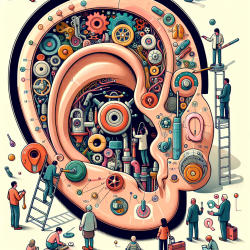Introduction
In the ever-evolving field of healthcare, the integration of technology is reshaping the way practitioners approach patient care. A recent study titled "Machine Learning Based Linking of Patient Reported Outcome Measures to WHO International Classification of Functioning, Disability, and Health Activity/Participation Categories" offers groundbreaking insights that could significantly enhance the skills of practitioners dealing with chronic low back pain (cLBP).
The Power of Machine Learning
The study focuses on optimizing machine learning (ML) methods to automatically link information from patient-reported outcome measures (PROMs) to the WHO's International Classification of Functioning, Disability, and Health (ICF) categories. This approach not only improves the accuracy of diagnosing activity limitations and participation restrictions but also identifies the minimal set of PROMs necessary for effective linking without compromising performance.
Why This Matters
For practitioners, the ability to accurately assess a patient's functional health state is crucial. The study's findings suggest that using a refined ML approach, specifically Random Forest methods, can enhance the prediction of limitations and restrictions in ICF categories. This not only streamlines the diagnostic process but also ensures that patients receive the most appropriate interventions tailored to their specific needs.
Implementing the Findings
Practitioners can implement these findings by:
- Adopting ML tools that utilize Random Forest methods for patient assessments.
- Focusing on a minimal set of PROMs to reduce patient burden while maintaining diagnostic accuracy.
- Engaging in further research to explore the applicability of these methods across different patient demographics and conditions.
Encouraging Further Research
While the study provides a robust framework for improving patient assessments, it also opens the door for further research. Practitioners are encouraged to explore the following:
- Investigating the application of these ML methods in other chronic conditions beyond cLBP.
- Exploring the integration of additional data sources to enhance the predictive power of ML models.
- Collaborating with interdisciplinary teams to refine and validate these methods in real-world clinical settings.
Conclusion
By embracing the advancements in machine learning and its application in healthcare, practitioners can significantly enhance their diagnostic capabilities and improve patient outcomes. The study's findings serve as a beacon of innovation, guiding practitioners toward more efficient and effective patient care.
To read the original research paper, please follow this link: Machine Learning Based Linking of Patient Reported Outcome Measures to WHO International Classification of Functioning, Disability, and Health Activity/Participation Categories.










